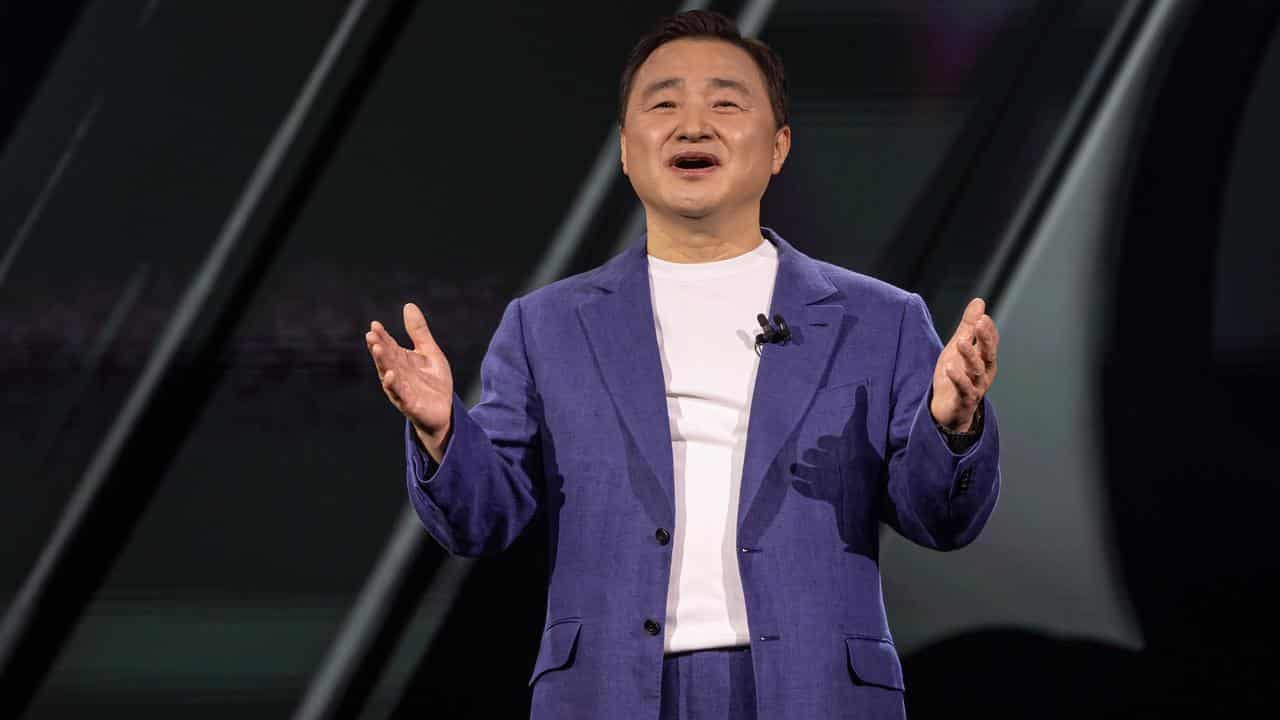
Your next smartphone is likely to get its 'smarts' from artificial intelligence after the world’s biggest manufacturer revealed plans to install generative AI tools inside more handsets.
The AI-powered features unveiled by Samsung on Thursday include software that composes email messages based on prompts, suggests text message responses based on past conversations, and generative AI tools that can add to or alter photos.
But the South Korean tech giant will not be alone in its AI push as rivals Apple and Google have announced plans to deploy AI technology in their upcoming devices, and analysts predict more than two in every five smartphones will rely on the technology by 2027.
Samsung demonstrated its latest AI creations while launching the Galaxy Z Fold6 and Flip6 at the Carrousel du Louvre in Paris, adding to AI software it revealed in January.
The company was committed to introducing more of its customers to generative AI tools, president TM Roh told the audience.
"Galaxy AI will be available in 200 million Galaxy devices this year," he said.
"The impact will be profound."
New AI tools installed in the two folding phones, due for release on July 31, will include features to transcribe voice recordings, translate foreign languages in real-time, edit photos automatically and add objects into existing photos by interpreting a user’s drawing.

An updated version of Google’s Circle-to-Search feature will also solve algebraic equations captured on camera, and a potentially controversial addition called Suggested Replies will analyse the last seven text messages exchanged between two people and compose three potential replies.
Samsung Australia mobile experience head Eric Chou said users would ultimately decide how many of the AI tools they used, but a customer survey showed 80 per cent of those who could access the technology used it monthly.
"You still have control over what kind of tone, what kind of message you want to send," Mr Chou said.
"Ultimately, I think AI is going to be a tool and we're not going to allow AI to completely take over what we do day to day."
Apple announced plans to add generative AI tools to its smartphones in June, using a mix of its own software and the work of OpenAI's ChatGPT, while Google is expected to reveal new tools using its Gemini AI model in August.
Research from Counterpoint predicted generative AI tools would be used on more than one billion smartphones by 2027, representing 43 per cent of all global smartphone shipments.
Telsyte managing director Foad Fadaghi said consumers should expect to see plenty of unexpected AI tools added to phones over the coming months, with most designed to encourage them to buy a new device rather than swapping to a new brand.
"Across the board, all brands, all competitors are latching on to AI branding and AI functionality in their phones," he said.
"It's about creating hooks to re-engage their customers."
Mr Fadaghi said users should expect to see more AI-powered photography options in 2024, and tools to help them write better emails and messages.
FIVE AI-POWERED PHONE FEATURES
Photos: One of the most popular uses of AI, the technology can enhance photos, remove subjects, add objects or replicate backgrounds in Samsung, Google and future Apple phones.
Messages: AI can be used to rewrite or suggest responses to text messages and emails. Samsung’s Suggested Replies feature will analyse the last seven messages between two people and compose possible responses.
Summaries: Apple's AI software updates will see its phones offer to summarise, rewrite or proofread writing in email messages or third-party apps.
Translation: A feature in Samsung's Flip6 and Fold6 phones will translate conversations in two different languages and show results on its outer screen.
Transcription: A popular use for the technology, Google converts voice to text in its Pixel smartphones. Samsung's Note Assist feature will do the same.
The reporter travelled to France as a guest of Samsung Australia.









